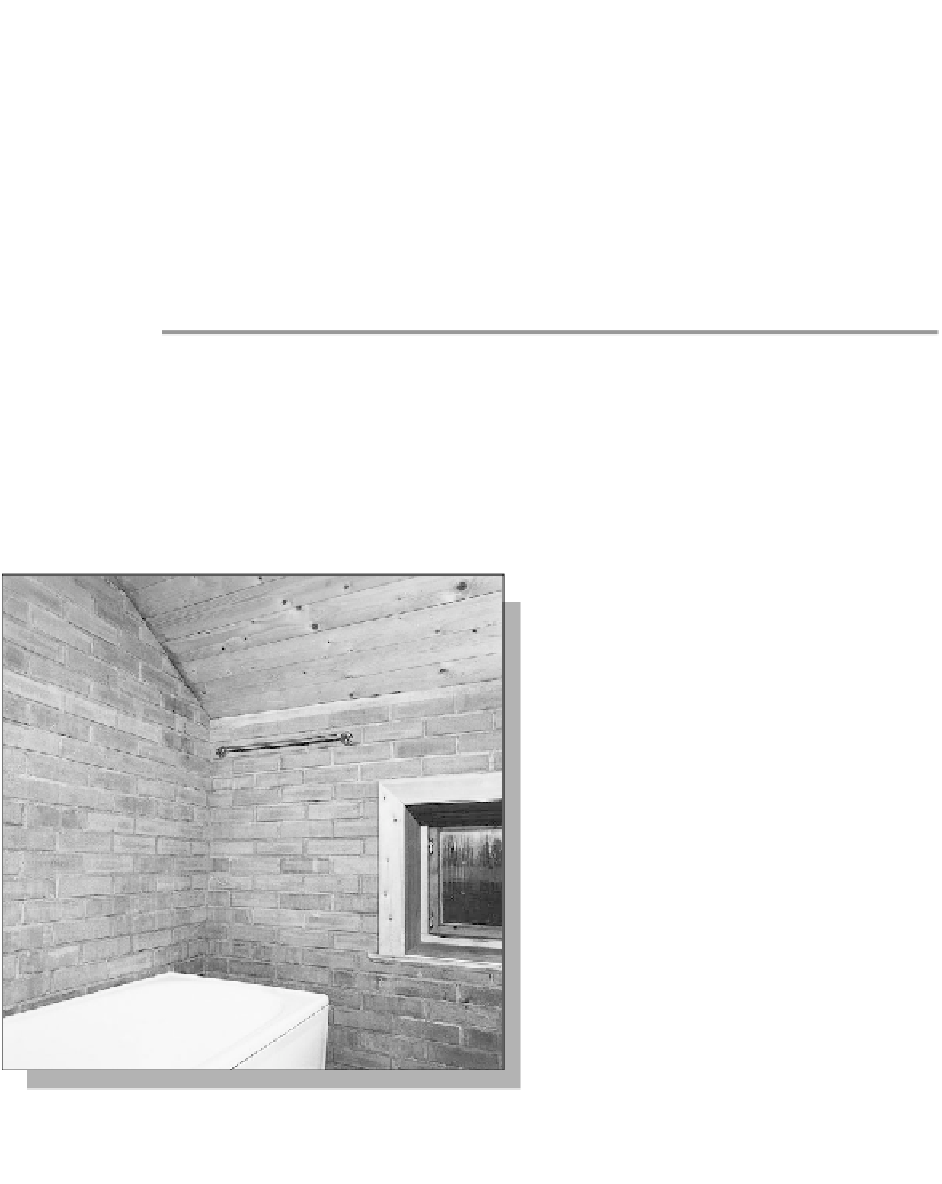Civil Engineering Reference
In-Depth Information
Table 14.4:
The use in building of fired clay climatic products
Product
Areas of use
Low/medium fired brick
Balancing of humidity
Brick with high lime content (15-20% lime)
Balancing of humidity
Bricks containing materials such as sawdust, peat, hacked
straw and powdered coal, that are burnt out during
Thermal insulation
the firing process
Bricks with fossil meal as an insulating aggregate
Thermal insulation
Expanded clay, loose
Thermal insulation, capillary break
Lightweight concrete
Thermal insulation
Zytan block
Thermal insulation
Insulating aggregate such as fossil meal can be added, and once fired the blocks
have a relatively high thermal insulation value.
Fired clay blocks with fossil meal as thermal insulation
One part clay is mixed with 15 parts fossil meal into a homogeneous mass. It is also possi-
ble to add 25 per cent sawdust or pieces of cork before the mass is pressed into forms and
fired. Hard blocks can be used structurally,
while the blocks with sawdust or cork pieces
are primarily used for insulation. In addition to
these solid blocks, the material can be formed
into blocks with holes.
Fossil meal which naturally contains the
right amount of clay to enable formation
directly into blocks is known as sandy clay.
In Scandinavia this form of fossil meal
occurs only at one site, Jylland in
Denmark, and the sources are not very
plentiful.
Light expanded clay
Expanded clay can be used as loose fill
or cast with cement into blocks or
other structural units. It has a relative-
ly high thermal insulation value. Loose
expanded clay pellets can be used
under the slab of a building as a capil-
lary break. Light expanded clay and
light clay thermal blocks have good
structural properties, but they are poor
moisture regulators because the pore
structure is closed.
Figure 14.8: Highly porous bricks balance humidity in a
bathroom. Hydraulic lime mortar is used to improve the
possibilities for re-use. Source: Gaia Lista, 1990



